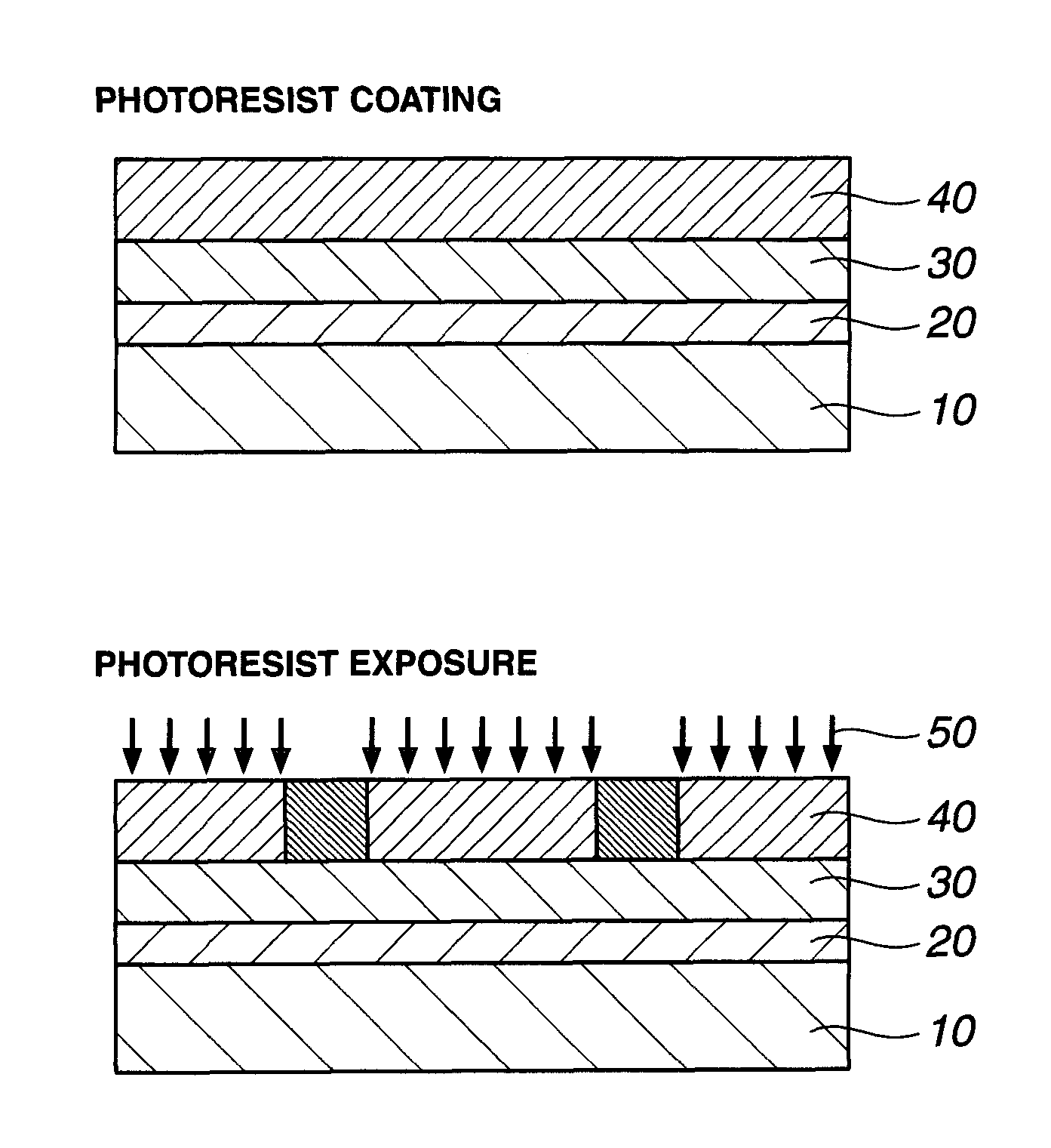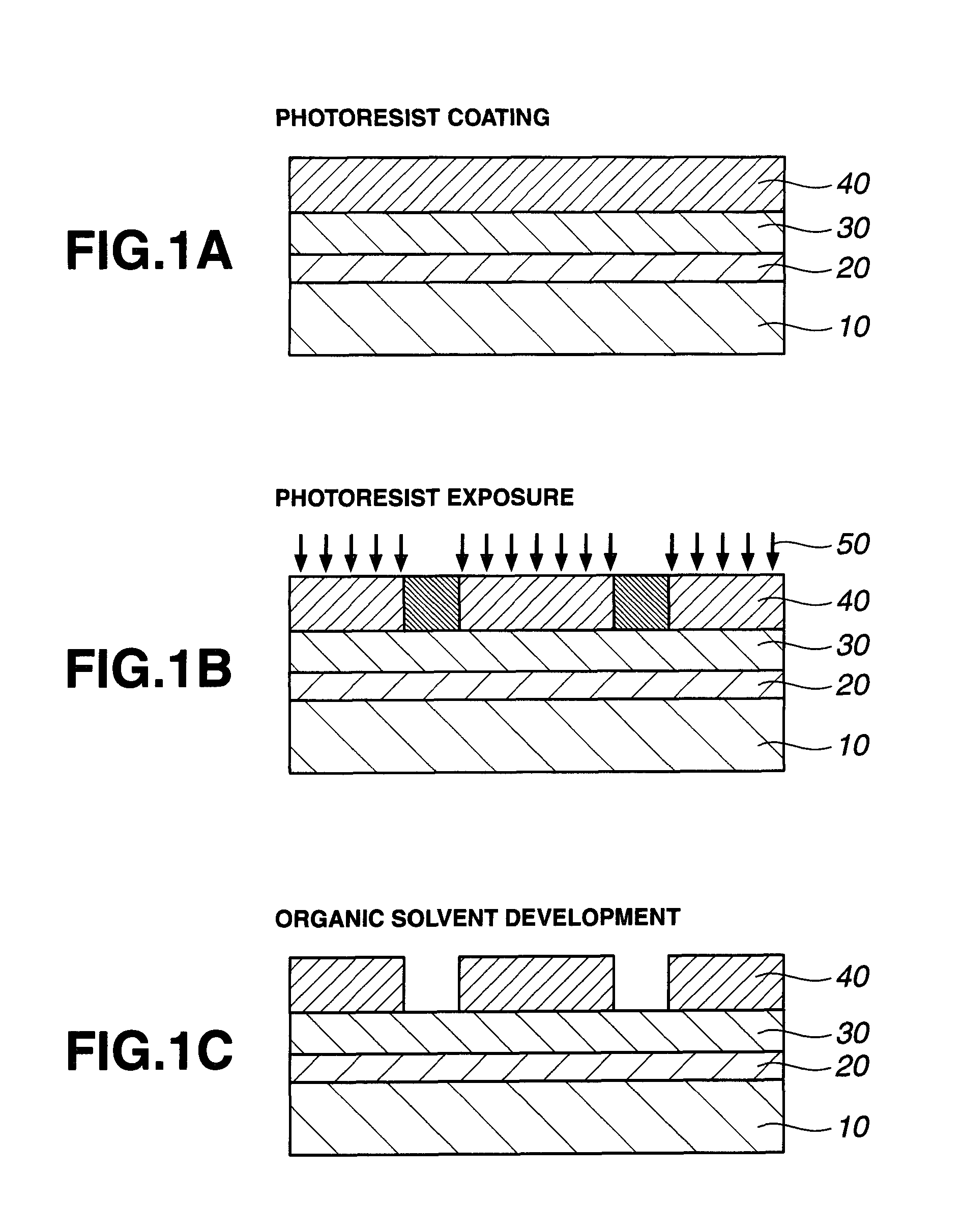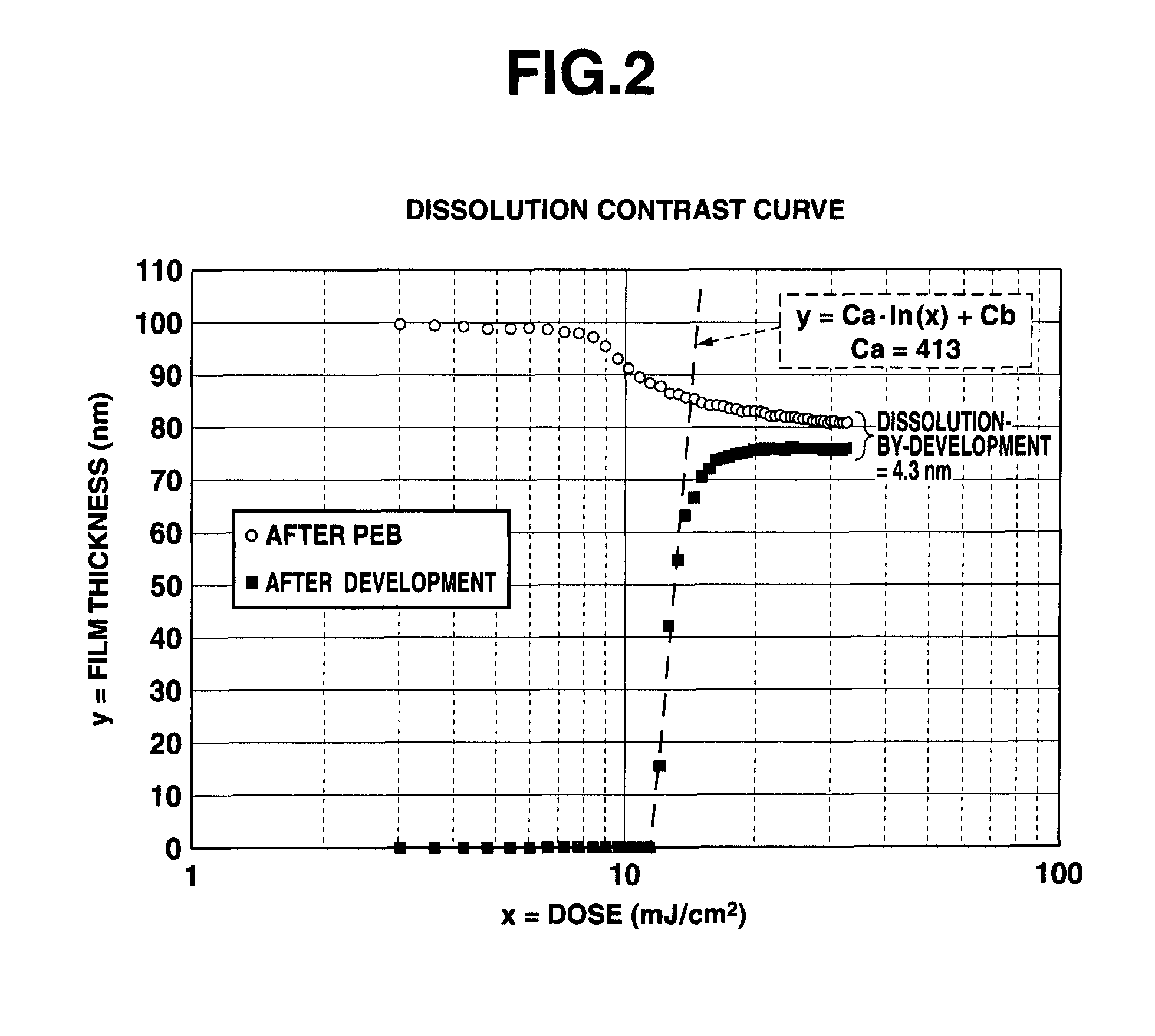Patterning process, resist composition, polymer, and polymerizable ester compound
a technology of resist and composition, applied in the field of radiation-sensitive chemically amplified resist composition, can solve the problems of low etch resistance of resist and high cost of scanner, and achieve the effect of high contrast and high dissolution contras
- Summary
- Abstract
- Description
- Claims
- Application Information
AI Technical Summary
Benefits of technology
Problems solved by technology
Method used
Image
Examples
synthesis example 1
Synthesis of Polymerizable Ester Compound (M1)
[0138]
[0139]With stirring in a water bath, 8.2 g of potassium t-butoxide was added to a mixture of 10.9 g of compound (M1-1), 12.0 g of compound (M1-2), and 30 g of N-methylpyrrolidone. The contents were stirred for 30 minutes and then for 16 hours at 45° C. Then 100 g of toluene and 1.3 g of acetic acid were added to stop the reaction, followed by aqueous work-up and distillation (boiling point 67° C. / 8 Pa) for purification. There was obtained 9.6 g of intermediate (M1-3).
[0140]With ice cooling and stirring, a mixture of 770 mg of sodium borohydride and 10 g of water was added dropwise to a mixture of 12.2 g of intermediate (M1-3) and 40 g of tetrahydrofuran. The contents were stirred for 1 hour. Then 2.4 g of acetone was added to stop the reaction. This was followed by addition of 100 g of toluene, aqueous work-up, and concentration in vacuum to 68 g. To the concentrate were added 6.4 g of pyridine, 250 mg of 4-dimethylaminopyridine, a...
reference experiment 1
Acid Treatment of Polymerizable Ester Compound (M1)
[0144]
[0145]In a reactor, 100 mg of polymerizable ester compound (M1), 20 mg of Amberlyst® 15 (sulfonic acid cation-exchange resin), and 2 g of toluene were stirred at 80° C. for 1 hour. On GC-MS analysis, the product was identified to be lactone compound (M1-4).
[0146]GC-MS (EI): (m / z)+=27, 41, 55, 69, 85, 95, 113, 129, 139, 154, 168, 183, 198 (De)
[0147]The result of this experiment proves that the polymerizable ester compound within the scope of the invention forms a lactone ring under the action of acid. It is thus believed that a resist film based on a polymer comprising recurring units derived from this ester compound also forms a lactone ring under the action of acid through a similar reaction mechanism.
synthesis example 2
Synthesis of Polymerizable Ester Compound (M2)
[0148]
[0149]A mixture of 17.8 g of compound (M2-1), 200 g of methanol, and 0.5 g of sodium methoxide was heated and stirred for 20 hours. The reaction solution was neutralized with acetic acid, combined with 200 g of toluene, and concentrated in vacuum to 100 g. 100 g of acetonitrile, 25 g of diisopropylethylamine, and 12 g of chloromethyl methyl ether were added to the concentrate, which was stirred at 60° C. for 20 hours. The solution was subjected to aqueous work-up and purified by silica gel chromatography, obtaining 13.0 g of polymerizable ester compound (M2).
PUM
| Property | Measurement | Unit |
|---|---|---|
| wavelength | aaaaa | aaaaa |
| size | aaaaa | aaaaa |
| size | aaaaa | aaaaa |
Abstract
Description
Claims
Application Information
 Login to View More
Login to View More - R&D
- Intellectual Property
- Life Sciences
- Materials
- Tech Scout
- Unparalleled Data Quality
- Higher Quality Content
- 60% Fewer Hallucinations
Browse by: Latest US Patents, China's latest patents, Technical Efficacy Thesaurus, Application Domain, Technology Topic, Popular Technical Reports.
© 2025 PatSnap. All rights reserved.Legal|Privacy policy|Modern Slavery Act Transparency Statement|Sitemap|About US| Contact US: help@patsnap.com



